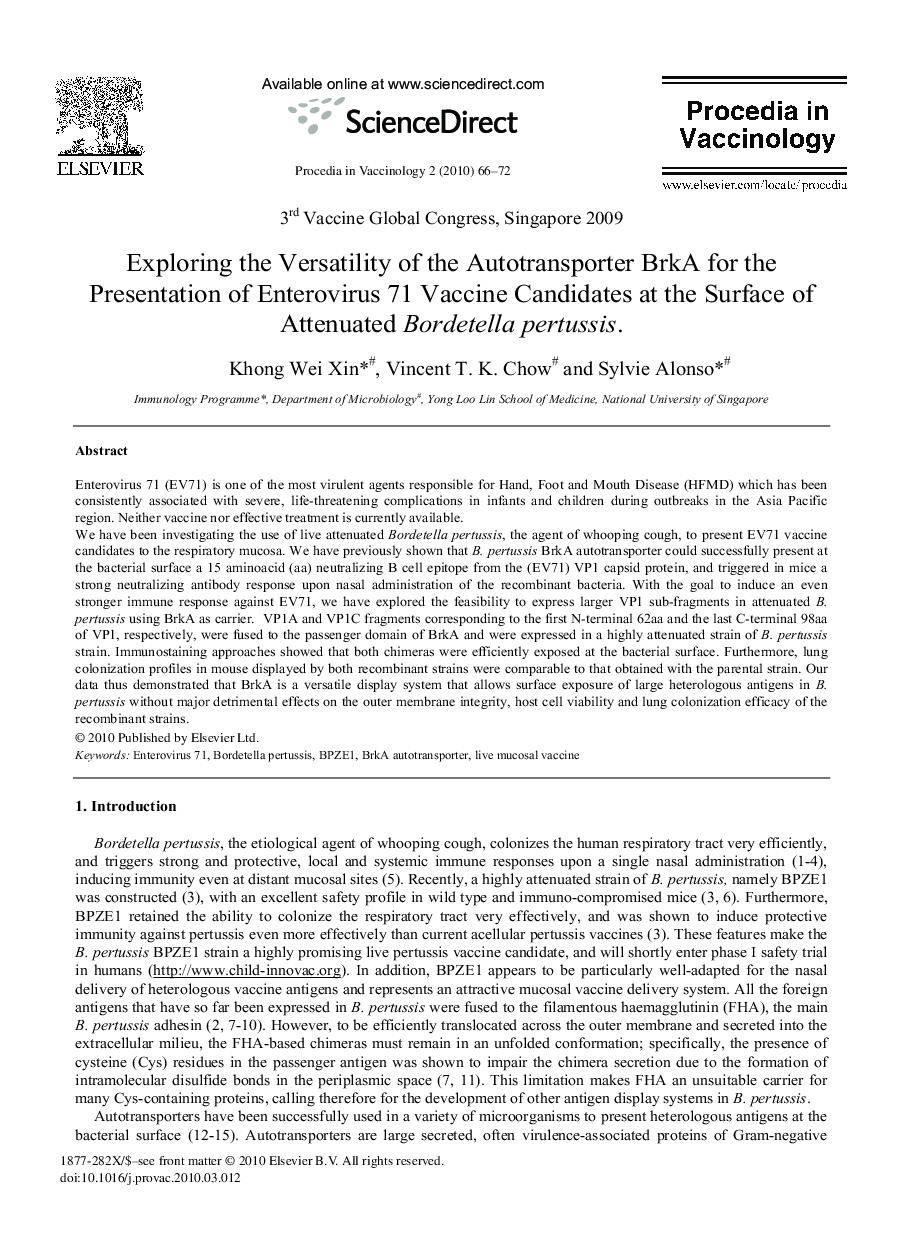| Article ID | Journal | Published Year | Pages | File Type |
|---|---|---|---|---|
| 2473804 | Procedia in Vaccinology | 2010 | 7 Pages |
Enterovirus 71 (EV71) is one of the most virulent agents responsible for Hand, Foot and Mouth Disease (HFMD) which has been consistently associated with severe, life-threatening complications in infants and children during outbreaks in the Asia Pacific region. Neither vaccine nor effective treatment is currently available.We have been investigating the use of live attenuated Bordetella pertussis, the agent of whooping cough, to present EV71 vaccine candidates to the respiratory mucosa. We have previously shown that B. pertussis BrkA autotransporter could successfully present at the bacterial surface a 15 aminoacid (aa) neutralizing B cell epitope from the (EV71) VP1 capsid protein, and triggered in mice a strong neutralizing antibody response upon nasal administration of the recombinant bacteria. With the goal to induce an even stronger immune response against EV71, we have explored the feasibility to express larger VP1 sub-fragments in attenuated B. pertussis using BrkA as carrier. VP1A and VP1C fragments corresponding to the first N-terminal 62aa and the last C-terminal 98aa of VP1, respectively, were fused to the passenger domain of BrkA and were expressed in a highly attenuated strain of B. pertussis strain. Immunostaining approaches showed that both chimeras were efficiently exposed at the bacterial surface. Furthermore, lung colonization profiles in mouse displayed by both recombinant strains were comparable to that obtained with the parental strain. Our data thus demonstrated that BrkA is a versatile display system that allows surface exposure of large heterologous antigens in B. pertussis without major detrimental effects on the outer membrane integrity, host cell viability and lung colonization efficacy of the recombinant strains.
